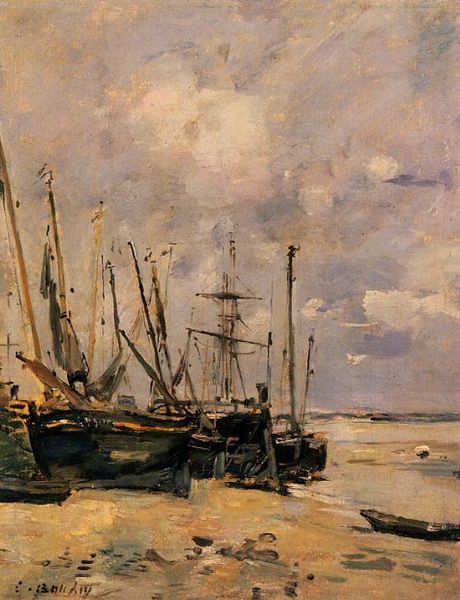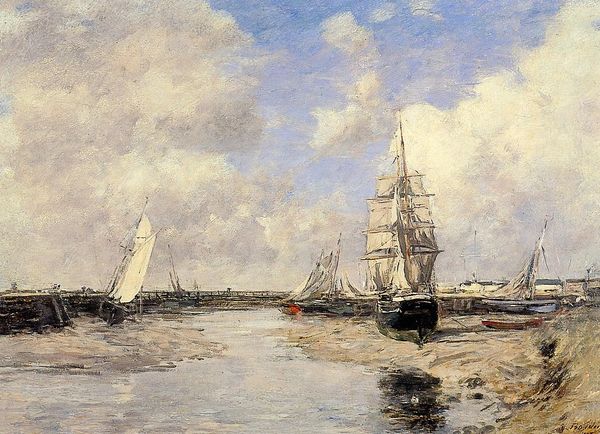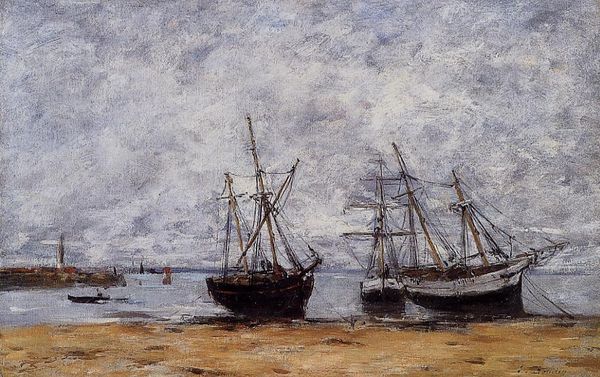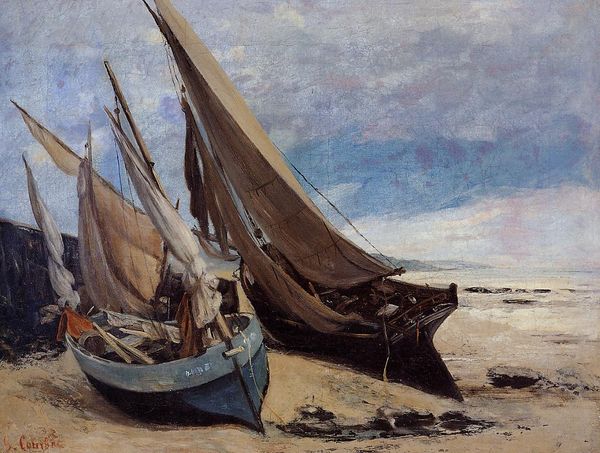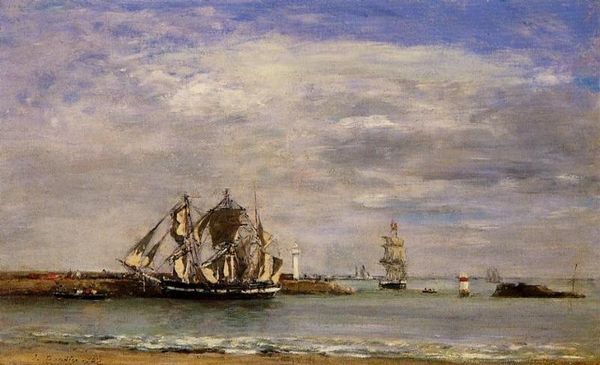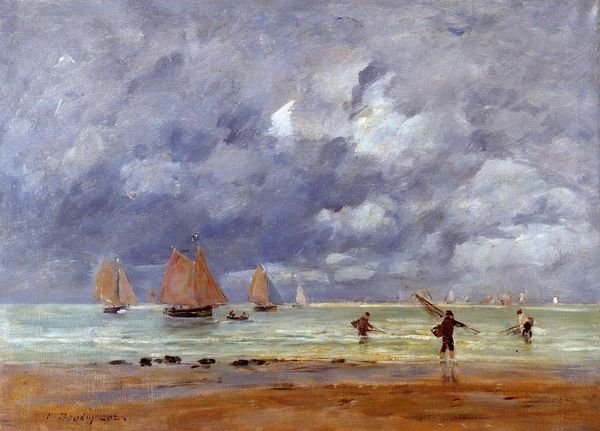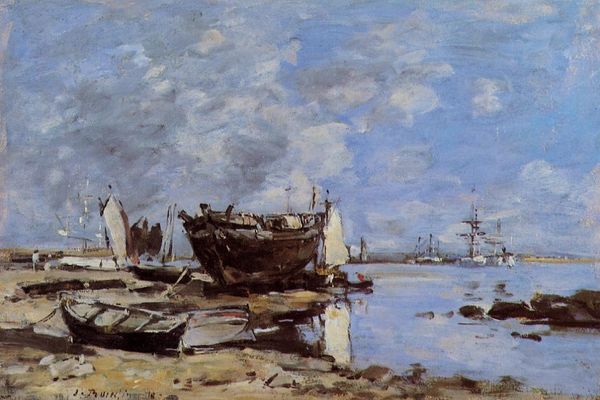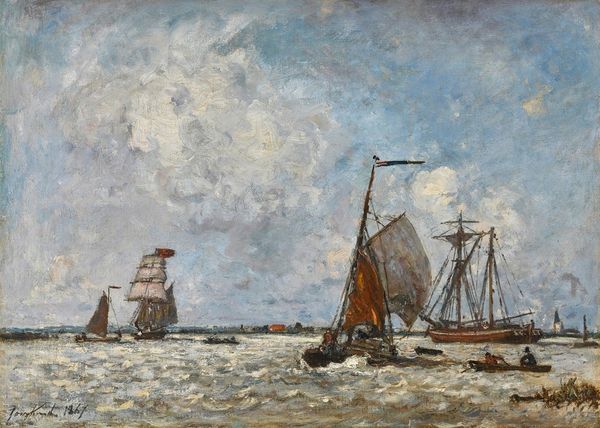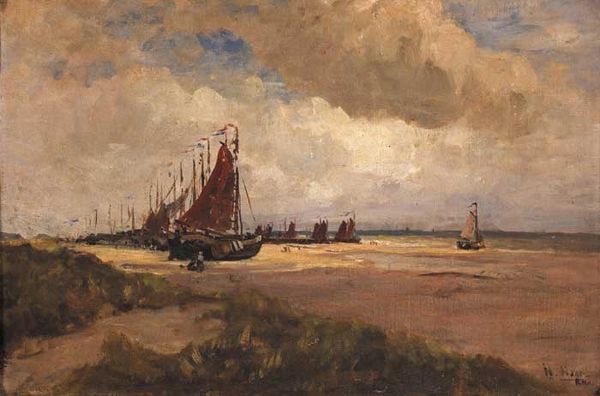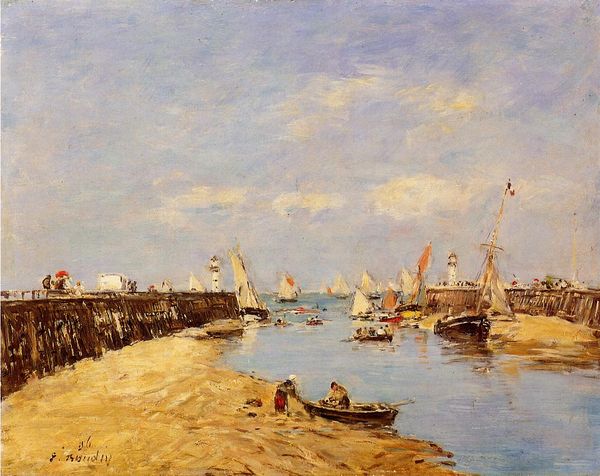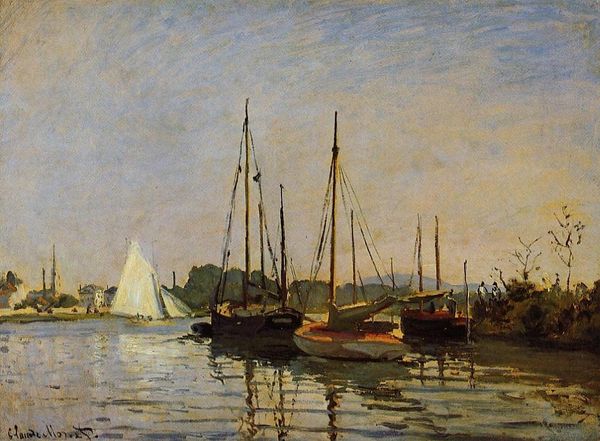
Copyright: Public domain
Eugène Boudin painted "Scheveningen, Boats Aground on the Shore" sometime in the late 19th century, capturing a scene from the Dutch coast. Boudin, who was a mentor to Monet, was part of a generation of artists who turned their attention to the everyday lives of working-class people. The painting’s focus on boats aground invites us to consider the lives of the fishermen and their families who depended on the sea for their livelihoods. These boats, rendered with a soft, almost hazy quality, speak to the precariousness of existence, the constant negotiation between humanity and nature. The figures on the beach, perhaps women and children waiting for the boats to return, introduce questions of gender and labor. How did the economic realities of fishing shape the social roles within these communities? Boudin’s work refuses the grand narratives of history painting, choosing instead to find beauty and meaning in the mundane. It’s a move that resonates with a broader shift in 19th-century art towards depicting the realities of modern life. This painting, with its muted tones and quiet sense of dignity, invites us to reflect on the intimate connections between people, place, and the relentless power of the sea.
Comments
No comments
Be the first to comment and join the conversation on the ultimate creative platform.
